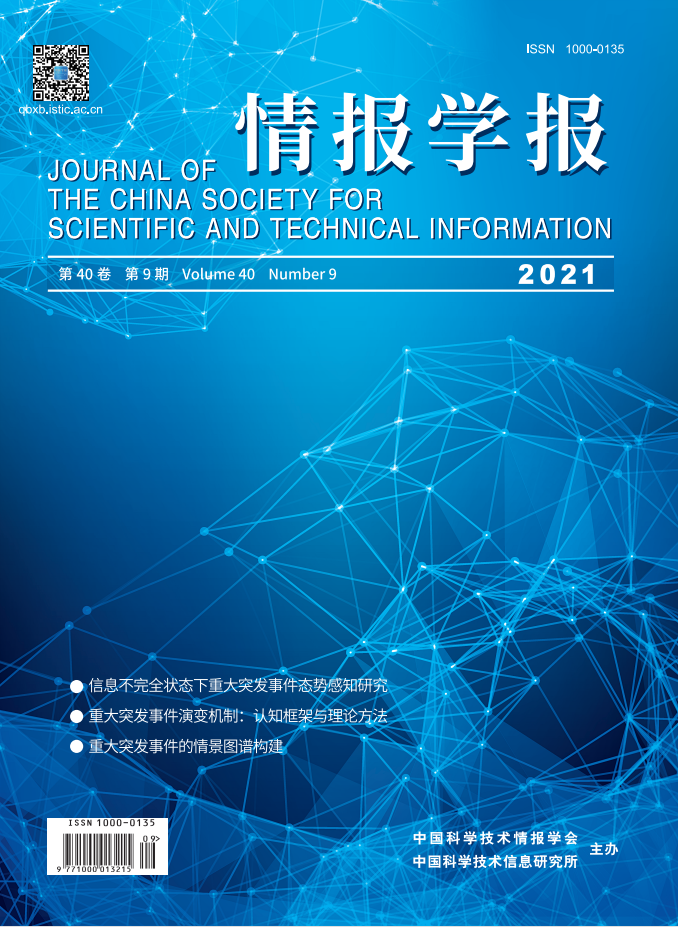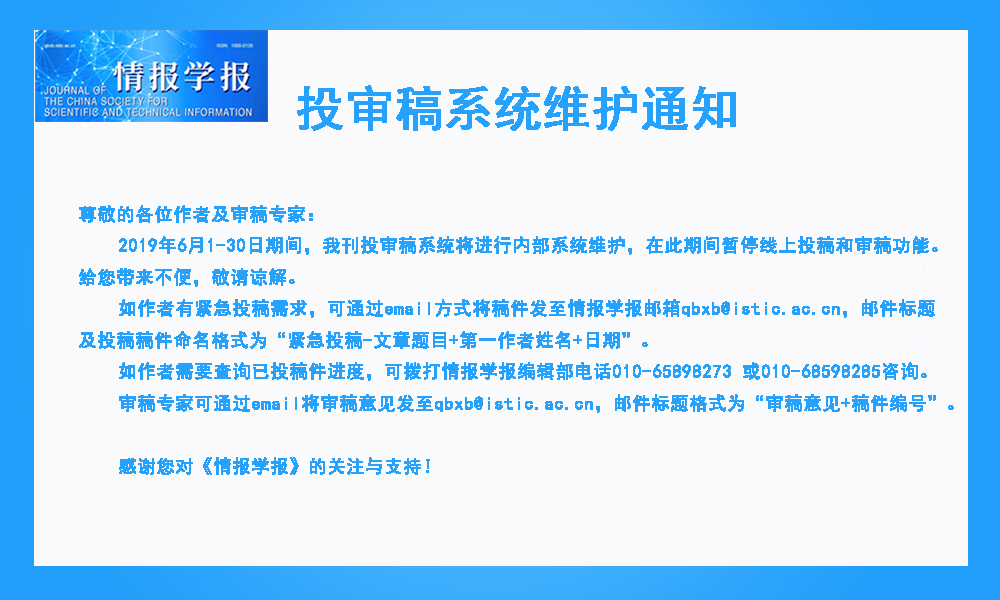 |
|
2021 Vol. 40, No. 9
Published: 2021-09-24 |
|
|
| |
|
|
|
|
|
914 |
The Evolution Mechanism of Major Emergencies: Cognitive Framework and Theoretical Methods Hot! |
|
 |
Zhang Haitao, Li Jiawei, Zhou Honglei, Luan Yu |
|
|
DOI: 10.3772/j.issn.1000-0135.2021.09.002 |
|
|
Under the strategic judgment of great changes not seen in a century and based on a holistic approach to national security from a philosophical perspective, we research major emergencies and excavate their logical knowledge, gather intelligence-wisdom based on emergency data and knowledge, deconstruct such emergencies' evolution mechanism, and provide scientific support for accurate decision-making. It is proposed that the cognitive framework of “element-relationship-logic” should be formed by describing the cognitive panorama of major emergencies and their evolution problems with pictures, and the concrete data presentation and structural analysis of such pictures should be carried out using data thinking and structural thinking to construct the event logic graph and scenario graph of major emergencies. Situation awareness and scenario deduction can realize the understanding, interpretation, and prediction of the overall security situation of major emergencies and also provide the basis for accurate decision-making to achieve a scientific response. |
|
|
2021 Vol. 40 (9): 914-923
[Abstract]
(
473
)
HTML
(102 KB)
PDF
(2333 KB)
(
999
) |
|
|
|
924 |
Construction of Scenario Graph for a Major Emergency Hot! |
|
 |
Zhang Haitao, Liu Weili, Luan Yu, Liu Yan |
|
|
DOI: 10.3772/j.issn.1000-0135.2021.09.003 |
|
|
The event-centered construction of a major-emergency scenario graph can not only describe the state of the scenario elements but also reflect the development trend of major emergencies; therefore, we propose a method for constructing such a graph. First, we analyze the factors that affect the occurrence, development, and mutation of events; next, we explore, in-depth, the internal connections between them to build a scenario model to describe the state of these factors and connections between them. Second, under the guidance of the scenario model, we construct the upper-level scenario ontology and propose a method of using deep learning to construct a lower-level scenario ontology. Finally, we propose the process of constructing the scenario graph, construct the drought scene ontology through event extraction and event relationship extraction, and instantiate the scene ontology to establish a scene graph of the catastrophic drought in Jilin Province in 2007. The empirical results show that the scenario graph constructed in this study can not only describe the current development state of a major emergency but also explain the internal motivation of the event’s development and evolution and predict its future development trend. |
|
|
2021 Vol. 40 (9): 924-933
[Abstract]
(
302
)
HTML
(93 KB)
PDF
(3425 KB)
(
613
) |
|
|
|
934 |
The Evolutionary Characteristics of Sleeping Beauties from the Perspective of Altmetrics Hot! |
|
 |
Hou Jianhua, Li Hao, Zhang Yang, Gao Jiping |
|
|
DOI: 10.3772/j.issn.1000-0135.2021.09.004 |
|
|
Sleeping Beauties (SBs) refers to special phenomena of the diffusion of scientific knowledge based on citation trajectories. However, the rapid advancement of social media has altered the mode of scientific communication and knowledge diffusion. This study aims to reveal the dynamic evolution of Altmetrics-Based Sleeping Beauty (A-SB), which involves analyses of the altmetric indexes and citation index. Using A-SB and its identified indexes and standards, we connected the recognition results based on the citation trajectory. The analysis and summary of the characteristics of the identified A-SB revealed the SBs’ evolution under the comprehensive trajectory based on altmetrics from two dimensions of the dynamic distribution of altmetric indexes and the state transition during the A-SB evolution. By combining the comparative analysis of A-SB and Citation-Based Sleeping Beauty (C-SB), we constructed the indicator Ab under the comprehensive evolution trajectory to identify SBs, and found that A-SB can better reflect the evolution process of SBs on the social media platform. In addition, we identified the main influencing factors of the A-SB state transition in the evolution of “Sleeping-Awakening” and differences in the impact of each index, revealing the role and characteristics of Dogsleep on the dynamic evolution of A-SB. |
|
|
2021 Vol. 40 (9): 934-952
[Abstract]
(
279
)
HTML
(250 KB)
PDF
(4064 KB)
(
251
) |
|
|
|
962 |
Research on the Development Trend of Blockchain Technology Application in Healthcare Field Based on Bibliometrics and Indexing Statistics Hot! |
|
 |
Zhang Li, Ma Minxiang, Du Jun, Tan Peng, Pu Kangjing, Wu Bin |
|
|
DOI: 10.3772/j.issn.1000-0135.2021.09.006 |
|
|
Analyzing reference relations, lexical quantity, and indexing statistics in journals, articles, and patent information, this study examines the status and trends in the field of block chain and healthcare. Additionally, the research hotspots and aspects are indicated to provide the researchers with intelligence support for understanding the emphasis and directions. With papers collected from Web of Science and CNKI databases and patent information from Chinese patent databases as research objects, and using literature metrology, indexing statistical method, and literature analysis tool CiteSpace, this study analyzes the basic research status, hotspots, and frontiers in domestic and overseas blockchain-medical fields. Presently, with growing interest in blockchain-medical research, the US and China have become important research bases. Additionally, domestic and overseas research direction and content are somewhat similar. Medical data sharing, data security, privacy protection, technology coupling, mobile awareness, etc., are the hotspots and challenges in this field worldwide. Realizing whole-field collaborative management of medical treatment based on medical data sharing and achieving optimized diagnosis and treatment process, drug traceability, medical supply chain management, infectious disease monitoring and prevention, mobile monitoring, etc., are the current frontiers of research application, as well as research trends. To consolidate domestic and overseas scientific and technological cooperation and exchanges and optimally utilize technological innovation resources, the research of blockchain-medical has great potential. |
|
|
2021 Vol. 40 (9): 962-973
[Abstract]
(
199
)
HTML
(122 KB)
PDF
(2780 KB)
(
670
) |
|
|
|
974 |
Research on the Technical Similarity Visualization Based on word2vec and LDA Topic Model Hot! |
|
 |
Xi Xiaowen, Guo Ying, Song Xinna, Wang Jin |
|
|
DOI: 10.3772/j.issn.1000-0135.2021.09.007 |
|
|
Technical similarity is an important part of technical intelligence analysis of enterprises, organizations, or countries, which can provide accurate and effective information for identifying potential competitive relationships and partners. Aiming at the problem that the LDA topic model ignores the semantic correlation between patent context, this paper proposes a technical similarity visualization method based on word2vec and LDA topic model. First, based on the word2vec model, we learn the contextual information of feature words in the collection of patent documents, and based on the LDA topic model, we construct the probability distribution of patentee-patent-technology topic and generate the topic vector, patent document vector, and patentee vector at the level of “word granularity.” We then use vector similarity index to calculate semantic similarity between patentee, and on this basis, the patentee-technology subject network is constructed. Finally, taking NEDD (nano enabled drug delivery) as an example, the model is proved to be effective in the analysis of technology similarity measure. |
|
|
2021 Vol. 40 (9): 974-983
[Abstract]
(
223
)
HTML
(121 KB)
PDF
(2573 KB)
(
654
) |
|
|
|
984 |
Empirical Study on Aging and Disposal of Foreign Social Science Journals: Based on the Investigation and Comparison on Citations of SSCI Review Hot! |
|
 |
Li Zhuozhuo, Zhang Lingxiao |
|
|
DOI: 10.3772/j.issn.1000-0135.2021.09.008 |
|
|
Under the background of rapidly updated information technology and gradually established data-intensive research paradigm, research on literature aging faces new challenges and the existing law of literature aging needs to be verified and discussed. Moreover, the condition of literature aging is also an important basis of collection disposal for libraries, which gives research on literature aging rich application value and practical significance. Take Law, Management, and Library Science and Information Science, for example, based on the citation data of the three subjects in SSCI, this paper first measures the aging index to investigate and compare literature aging degree of the selected subjects. Next, it introduces the Bradford distribution table and Bradford constant to study the distribution of citation in time. Lastly, the literature aging distribution quadrant diagram is presented to express different sensitivity for different disciplines on collection disposal and provide the basis for scientific decision-making of library's literature disposal. |
|
|
2021 Vol. 40 (9): 984-992
[Abstract]
(
210
)
HTML
(111 KB)
PDF
(1031 KB)
(
478
) |
|
|
|
993 |
Knowledge Discovery and Development Path Identification Based on Time-Expanded Network: Information Management Area as an Example Hot! |
|
 |
Wang Zongshui, Liu Haiyan, Liu Wei, Zhao Hong, Zhang Jian |
|
|
DOI: 10.3772/j.issn.1000-0135.2021.09.009 |
|
|
Text mining and network analysis have become important tools for knowledge discovery. This study proposes a method based on time-expended network considering prior related research. First, through stage division and keyword time-expanded network construction, this study assigns arcs value and carries out calculation of node-arcs matrix to detect the shortest paths. Next, it ranks the relative importance of keywords based on the closeness centrality and discovers the main knowledge development paths by matching the nodes of shortest paths within time-expanded network. In addition, it takes 43,624 articles of 24 journals in the information management field from 1979 to 2018 as samples to check the fitness of this method. The development period is divided into four equal slices with 10 years, which is followed by extraction and statistical analysis of the keywords by CiteSpace software. The knowledge evolution paths are found based on the time-expanded network and nodes’ closeness centrality. The results show that the knowledge development of information management research mainly includes five main paths, such as management, information system, innovation, design, and implementation; these paths connect with each other through technology, model and method, diffusion and knowledge, etc. which formed the knowledge network of information management research. |
|
|
2021 Vol. 40 (9): 993-1003
[Abstract]
(
255
)
HTML
(135 KB)
PDF
(2671 KB)
(
399
) |
|
|
|
1004 |
Characteristics and Orientation of Intelligence Studies in China from the Perspective of Historical Development Hot! |
|
 |
Li Shuqing, Feng Hao, Ding Xiaowei, Hu Huan, Zhang Yu, Mei Zishi |
|
|
DOI: 10.3772/j.issn.1000-0135.2021.09.010 |
|
|
The discipline of Intelligence Science in China is entering a key stage of development during this new era. Only when the future development direction and characteristics of information science are clearly defined and accurately set can the long-term development of this discipline be promoted and its value in social situations be truly brought into play. Based on a large number of documents and theoretical analysis, this paper compares and analyzes the internal relations and characteristics of Intelligence Science and many related disciplines from the perspective of the historical development of these disciplines. Intelligence Science obviously has an interdisciplinary nature, as it interacted and integrated with related disciplines in the process of historical development. However, the Intelligence Science theory needs to actively adjust to the practical requirements of modern information processing technology. It has the cultural characteristics of social science research and focuses more on the combination of its value application and social service, which is an important branch of management science. Using the perspective of the discipline development history, this paper comprehensively introduces the characteristics of Intelligence Science compared with other related disciplines, summarizes the history of its development, and outlines the discipline’s attributes and positioning. |
|
|
2021 Vol. 40 (9): 1004-1014
[Abstract]
(
260
)
HTML
(128 KB)
PDF
(748 KB)
(
239
) |
|
|
|


